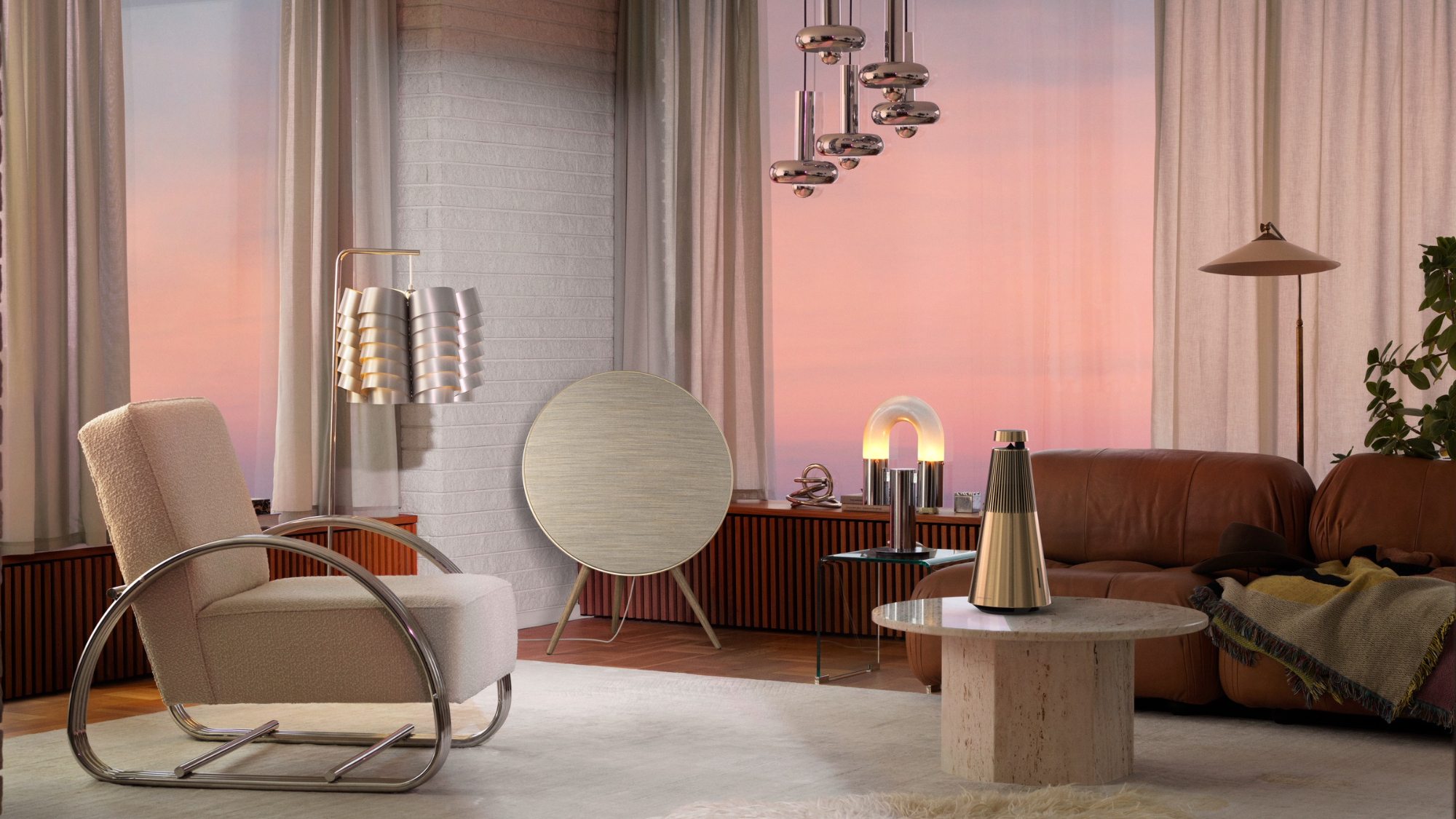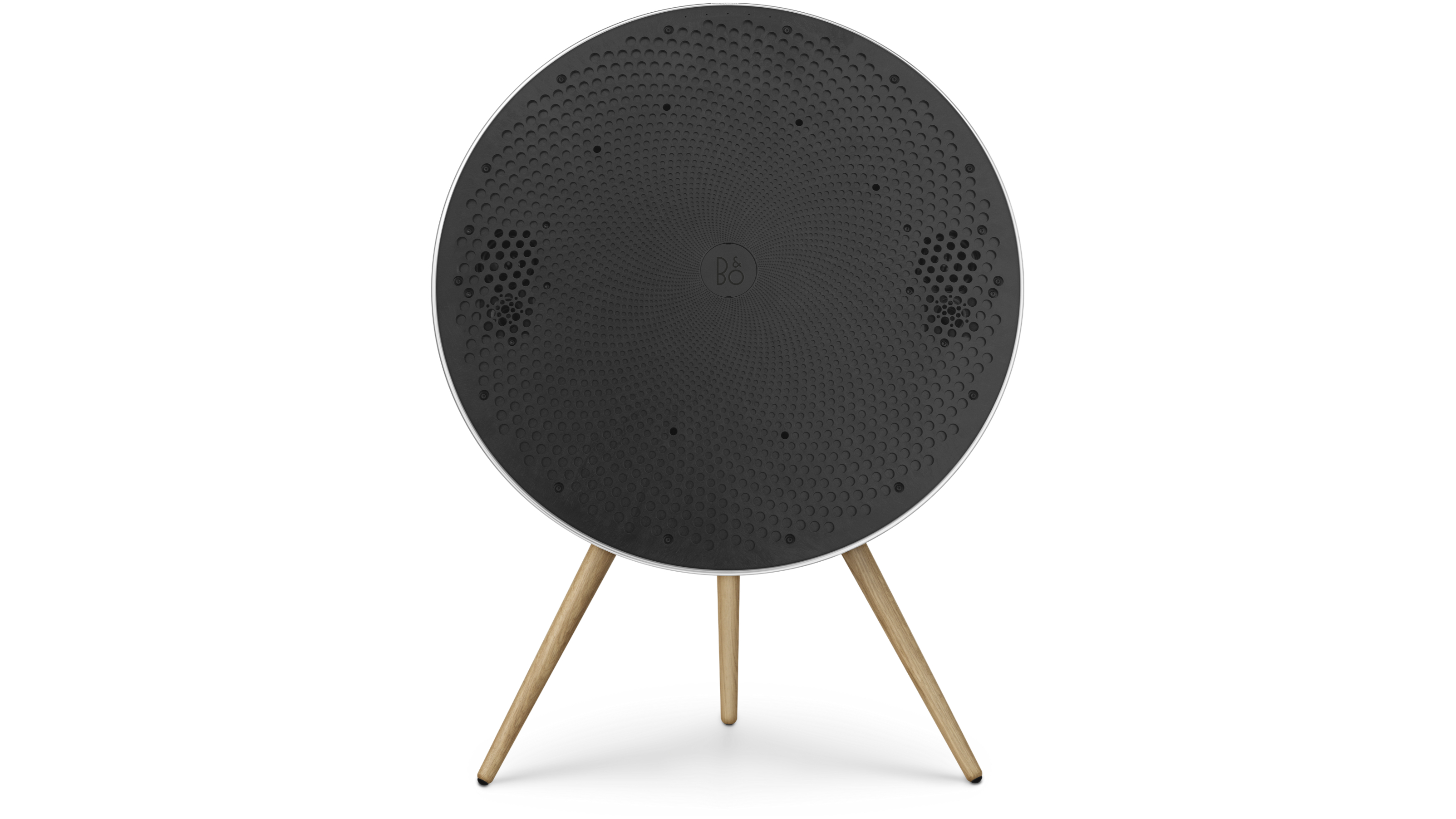Bang & Olufsen reveals new future-proofed Beosound A9 and Beosound 2 wireless speakers
The Beosound range is being made ready for the future

Stylish high-end audio pioneer Bang & Olufsen has announced updates for two wireless speakers in its Beosound range. The fifth generation of the Beosound A9 and the third generation of the smaller Beosound 2 will both launch with new colours, features and an updated design, along with a future-proofing module that will ensure the speakers’ longevity with new technologies.
The oval A9 speaker will now come in three new standard finishes: Black Anthracite, Gold Tone and Natural Aluminum. An improved interface in the new model allows you to change volume by sliding a hand across the surface, while a simple tap controls skipping, playing or pausing instantaneously.
The Beosound 2 retains its unique conical shape for 360-degree sound, but adds a new Black Anthracite finish to join the already available shades of Gold Tone and Natural. There’s also an upgraded interface for easier use, as well as Active Room Compensation. This will allow the Beosound 2 to “detect” its position in a room and adjust its sound accordingly to provide an optimised listening experience, claims B&O.
The big new improvement coming to both models, though, is the addition of Bang & Olufsen’s Mozart software platform, a move designed to essentially future-proof current models and products so that they can be updated or revised to correlate with changes or innovations in platforms and software.

Central to this is a replaceable module that B&O claims is so powerful that it can receive software updates and features “for many years to come”. If the connectivity or streaming platform becomes obsolete or outdated, the module can simply be replaced as and when it becomes necessary. Both speakers, theoretically, can integrate into any multi-room system well into the future.
This isn’t the first time we’ve seen B&O referencing the capabilities of its Mozart programme. The company’s new Theatre Dolby Atmos soundbar, for instance, is designed to outlast the very TV it originally accompanied by continually introducing new features and connectivity to whatever new products or services it is paired with.
The Beosound A9 (fifth generation) will be available from March, with prices starting from £2,899 / $3,699 / €3,299 – certain finishes and accessories will cost extra. The Beosound 2 (third generation) will be available from April, and will cost £2649 / $3199 / €2999 for the base model.
Get the What Hi-Fi? Newsletter
The latest hi-fi, home cinema and tech news, reviews, buying advice and deals, direct to your inbox.
MORE:
Check out our original Beosound 1 review
These are the best wireless speakers
Read all about Bang & Olufsen's Dolby Atmos soundbar

Harry McKerrell is a senior staff writer at What Hi-Fi?. During his time at the publication, he has written countless news stories alongside features, advice and reviews of products ranging from floorstanding speakers and music streamers to over-ear headphones, wireless earbuds and portable DACs. He has covered launches from hi-fi and consumer tech brands, and major industry events including IFA, High End Munich and, of course, the Bristol Hi-Fi Show. When not at work he can be found playing hockey, practising the piano or trying to pet strangers' dogs.
-
simontompkins "future-proofing module that will ensure the speakers’ longevity with new technologies."Reply
So basically all it does it receive software updates. A PC from 1981 is perfectly capable of receiving updates so why don't we just keep 1981 PCs? Obviously because all kinds of hardware changes have improved all kinds of things and any amount of software wouldn't compensate for getting better hardware components.
Seems to be this is Bang and Olufsen's marketing department trying to spin some kind of sustainability message, being able to update its software is hardly revolutionary. Or have I missed something? -
ultraminiature The Mozart platform is a module. The dealer can take this out and plug in a replacement.Reply
With most televisions and hi-fi you can not change anything and very rarely they offer mod updates. In the digital world you can't upgrade mobile phones, tablets or laptops. Memory options, capacity, storage are built in when you buy them.
The Apple IIe had replaceable boards. CP/M S100 and the IBM PC continued the idea allowing for a 10 year old system to get hardware and software updates without needing everything replaced.
That is what B&O are aiming at. Some changes can be accommodated by new software but others will need new chips and so the module can also be unplugged and replaced by the user or dealer. In PC terms it is fitting a new motherboard and all the cards and drives to the case and power supply.
Whether this will work and support the speakers in 5 or 10 years time we have to wait and see.
Some owners of the CX50, CX75 and CX100 have fitted the Raspberry Pi with B&O 4 channel amplifier that fits onto the RPi board. The passive crossovers are removed and a full active cross-over parameters selected in software. CX50 work as a stereo pair and the CX100 takes three of the four amplifiers for each drive unit. It turns a quality speaker into a new steaming active speaker. So they have a history of making some products get new advanced updates.
